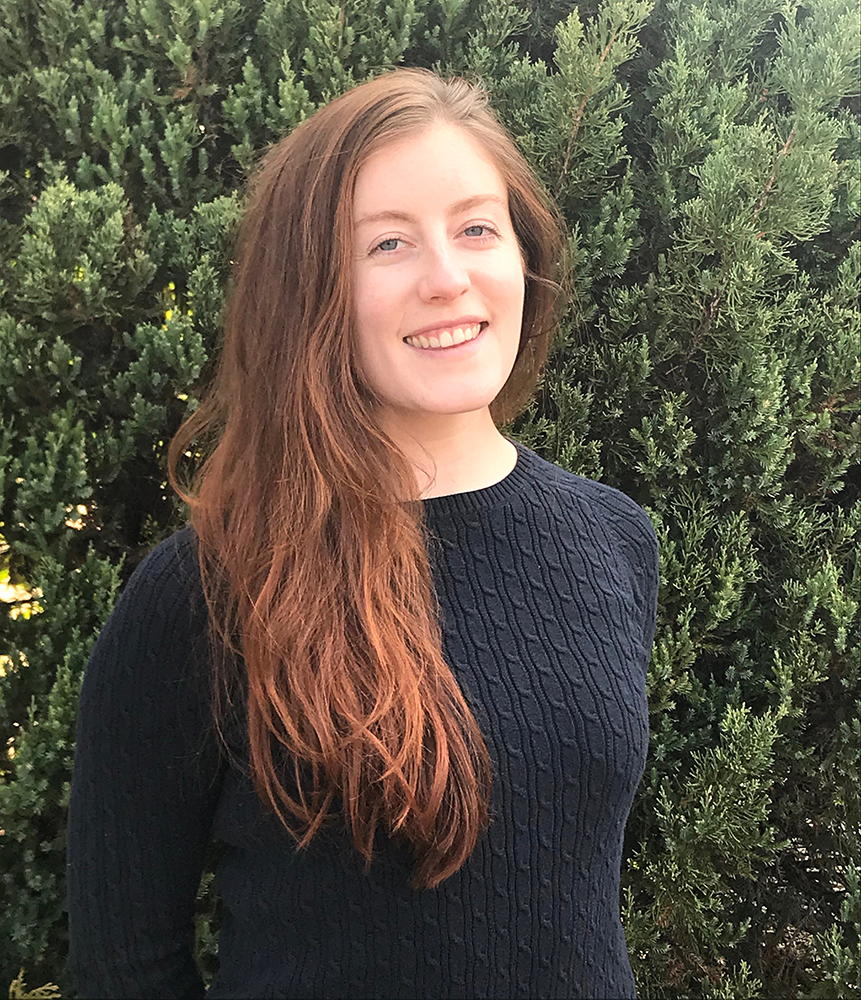MSE Doctoral Student Benefits from Collaboration with Aerospace Company
By Samantha Bertolino
Hannah Leonard knew early on that she wanted to study materials science in graduate school, and found UConn has a vibrant MSE program. The large number of industry partnerships ongoing with the department specifically caught her attention. In fact, her current research is conducted in collaboration with Collins Aerospace, and investigates a new generation of rapidly-solidified aluminum alloys that form metastable phases and microstructures resulting in an unusual combination of properties. Though her research on this problem is now coming to fruition, it took lots of time and effort to get there.
While Hannah was an undergraduate at Stony Brook University, she had the opportunity to spend two summers at Lawrence Berkeley National Laboratory as a participant in the Science Undergraduate Laboratory Internships (SULI) program. During that time, Hannah studied electrode materials for electrochemical reactors, which was her first experience getting truly involved in scientific research. She claims to have enjoyed being able to “fully invest herself” in a research project, and that she loved “both the pursuit of knowledge, and the creativity it involves.” She also reflected on the inspiration she drew from one of her research mentors in the program, who served as a role model and helped “spark the desire” in her to pursue graduate school.
Now Hannah is a fourth-year doctoral candidate conducting research on a Collins Aerospace sponsored project that investigates phase stability and micro-structural development in powder-processed aluminum alloys. Working in MSE Professor Mark Aindow’s research group, she is seeking to develop a quasi-crystalline dispersion-strengthened aluminum alloys reinforced with dispersions of icosahedral quasicrystals, which could be potentially used as lightweight, high-strength structural materials for aircrafts, particularly in external applications where good corrosion resistance is also needed. Her dissertation research focuses mainly on the microstructural characterization of these alloys using electron microscopy techniques, but also examines their thermo-mechanical properties.
Upon completing her degree, Hannah hopes to continue working in the aerospace industry, but is also receptive to other opportunities. Professor Aindow has helped her to make many connections, including through participation in a virtual internship with the Air Force Research Laboratory (AFRL) this past summer. As her dissertation nears completion, she offers a piece of advice to current undergraduate students of MSE, challenging them “not to be afraid of moving out of their comfort zone.” This is something that Hannah sometimes struggles with as well, but the times where she pushes herself are usually met with “some of the most rewarding experiences.” She says of these, “you would be surprised at what you are capable of if only you give it a shot.”

Sequence of bright field scanning electron microscopy images acquired during in situ heating of a quasi-crystalline dispersoid in an A1 matrix to 500°C for 30 min.
Published: November 9, 2020
Categories: graduate students, internship, news
Available Archives
